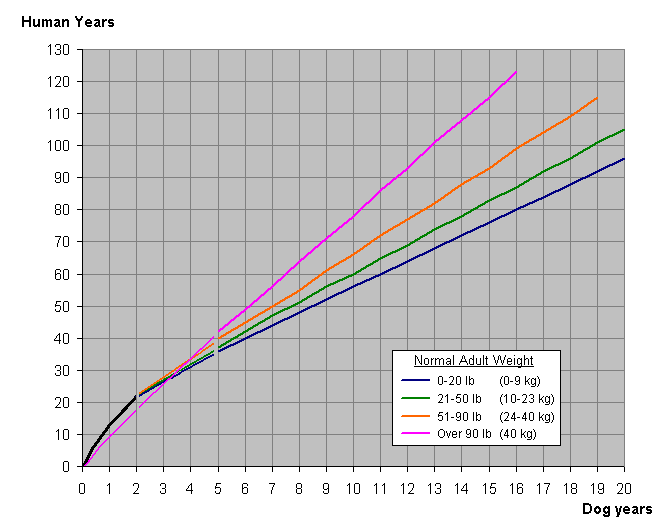Number 5 of the FCI newsletter is ready, although somewhat later than usual. But,
as number 6 is already in the pipeline and will be out soon, we will be able to
present you with six issues a year as promised. Together with my partners Marie
Luna Duran and Yves De Clercq we have worked hard to keep you informed on a regular
basis about what goes on in the world of the FCI. As if starting up a newsletter
was not enough, there were also the festivities to celebrate the FCI Centenary Year
with the FCI Centenary Champion of Champions Show and the Cynological Days recently
held in Brussels as the highlight. In the next issue we will focus on this event
only, with a full report and lots of photos. I realize that it was not just an exhausting
year for us, but for everyone who has worked hard to make all this happen, especially
all the people who helped organizing the different events...
Read more
Karl DONVIL
Member of the Editorial Board of the FCI Newsletter
Everything about the old dog - a complete overview - part 1/2
As a general rule of thumb, a dog who is 7 years or older should be considered middle
to senior aged. According to the UC Davis Book of Dogs, small-breed dogs (such as
small terriers) then become geriatric at about 11 years; medium-breed dogs (such
as larger spaniels) at 10 years; large-breed dogs (such as German Shepherd Dogs)
at 8 years; and giant-breed dogs (such as Great Danes) at 7 years. As with humans,
advanced years often bring changes in a dog's ability to hear, see and move about
easily. Skin condition, appetite and energy levels often degrade with geriatric
age, and medical conditions such as cancer, stroke, renal failure, incontinence,
arthritis and joint conditions, and other signs of old age may appear.
What is the relation between dog years and human years? It is not linear!
Three types of calculations are used but...
- Popular myth — it is popularly believed that "1 dog year equals 7 human years"
or the like. This is inaccurate on two scores, since the first year or two years
represent some 18–25 years, and the ratio varies with size and breed.
- One size fits all — another commonly used system suggests that the first
two years equal 10.5 years each, with subsequent years equaling four human years.
This is more accurate but still fails to allow for size/breed, which is a significant
factor.
- Size/breed specific calculators — those try to factor in the size or breed
as well. These are the most accurate types. They typically either work by expected
adult weight or by categorizing the dog as "small", "medium", or "large".


Approximate graph of dog years and human years (defined as how much each species
ages in a year), allowing for differing sizes of dog.
No one formula for dog-to-human age conversion is scientifically agreed on, although
within fairly close limits they show great similarities. As a rough approximation,
the human equivalent of a one-year-old dog is between about 10 and 15 years—a one-year-old
dog has generally reached its full growth and is sexually mature, although it might
still be lanky and need to fill in a more mature musculature, similar to human teenagers.
The second year is equivalent to about another 3 to 8 years in terms of physical
and mental maturity, and each year thereafter is equivalent to only about 10 or
11 human years.
Life expectancy by breed
|
Table of Breed Longevity / Michell 1999
|
|
Breed
|
Exp. (yrs)
|
|
Afghan Hound
|
12
|
|
Airedale Terrier
|
11,2
|
|
American Stafford. Terrier
|
12,3
|
|
Basset Hound
|
12,8
|
|
Beagle
|
13,3
|
|
Bearded Collie
|
12,3
|
|
Bedlington Terrier
|
14,3
|
|
Bernese Mountain Dog
|
7
|
|
Border Collie
|
13
|
|
Border Terrier
|
13,8
|
|
Boxer
|
10,4
|
|
Bull Terrier
|
12,9
|
|
Bulldog
|
6,7
|
|
Bullmastiff
|
8,6
|
|
Cairn Terrier
|
13,2
|
|
Cav. King Charles Spaniel
|
10,7
|
|
Chihuahua
|
13
|
|
Chow Chow
|
13,5
|
|
American Cocker Spaniel
|
12,5
|
|
Dachshund
|
12,2
|
|
Dalmatian
|
13
|
|
Doberman Pinscher
|
9,8
|
|
English Cocker Spaniel
|
11,8
|
|
English Setter
|
11,2
|
|
English Springer Spaniel
|
13
|
|
English Toy Spaniel
|
10,1
|
|
Flat-Coated Retriever
|
9,5
|
|
German Shepherd
|
10,3
|
|
German Shorthaired Pointer
|
12,3
|
|
Golden Retrievers
|
12
|
|
Gordon Setter
|
11,3
|
|
Great Dane
|
8,4
|
|
Greyhound
|
13,2
|
|
Irish Red and White Setter
|
12,9
|
|
Irish Setter
|
11,8
|
|
Irish Wolfhound
|
6,2
|
|
Jack Russell Terrier
|
13,6
|
|
Labrador Retriever
|
12,6
|
|
Lurcher
|
12,6
|
|
Miniature Dachshund
|
14,4
|
|
Miniature Pinscher
|
14,9
|
|
Miniature Poodle
|
14,8
|
|
Random-bred/Mongrel
|
13,2
|
|
Norfolk Terrier
|
10
|
|
Old English Sheepdog
|
11,8
|
|
Pekingese
|
13,3
|
|
Pomeranian
|
14,5
|
|
Rajapalayam hound
|
11,2
|
|
Rhodesian Ridgeback
|
9,1
|
|
Rottweiler
|
9,8
|
|
Rough Collie
|
12,2
|
|
Samoyed
|
11
|
|
Scottish Deerhound
|
9,5
|
|
Scottish Terrier
|
12
|
|
Shetland Sheepdog
|
13,3
|
|
Shiba Inu
|
14
|
|
Shih Tzu
|
13,4
|
|
Siberian Husky
|
13,5
|
|
Soft Coated Wheaten Terrier
|
13,2
|
|
Staffordshire Bull Terrier
|
14
|
|
Standard Poodle
|
12
|
|
Tibetan Terrier
|
14,3
|
|
Toy Poodle
|
14,4
|
|
Vizsla
|
12,5
|
|
Weimaraner
|
10
|
|
Welsh Corgi
|
11,3
|
|
Welsh Springer Spaniel
|
|
|
11,5
|
|
|
West Highland White Terrier
|
12,8
|
|
Wire Fox Terrier
|
13
|
|
Yorkshire Terrier
|
12,8
|
Factors affecting life expectancy
Apart from breed, several factors influence life expectancy:
- Diet - The oldest dog on record was Bluey, an Australian Cattle Dog, who died at
29 in 1939. In the 2000s, at least two dogs were still living at 27 years old, but
one was fed a purely vegetarian diet (border collie, died at 27) and one fed primarily
on kangaroo and emu meat (bull terrier cross, died at 27).
- Spaying and neutering - Neutering reduces or eliminates the risk of some causes
of early death, for example pyometra in females, and testicular cancer in males,
as well as indirect causes of early death such as accident and euthanasia (intact
dogs roam and tend to be more aggressive), but there might increase the risk of
death from other conditions (neutering in cited paper only showed an increased risk
for prostate cancer but has not been repeated in subsequent papers] in males, and
neutered males might have a higher rate for urinary tract cancers such as transitional
cell carcinoma and prostatic adenocarcinoma.
DVM, Dr Wim Van Kerkhoven
Viyo International
Website :
www.viyo-elite.com
